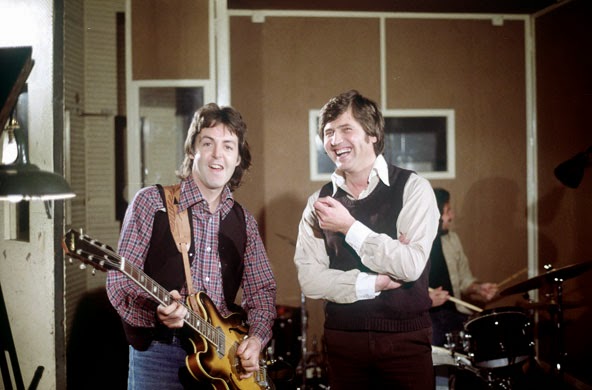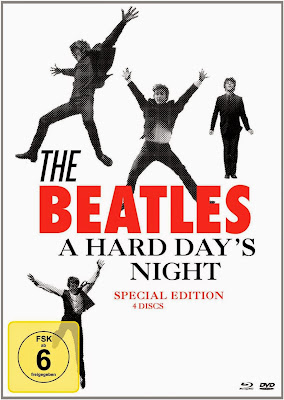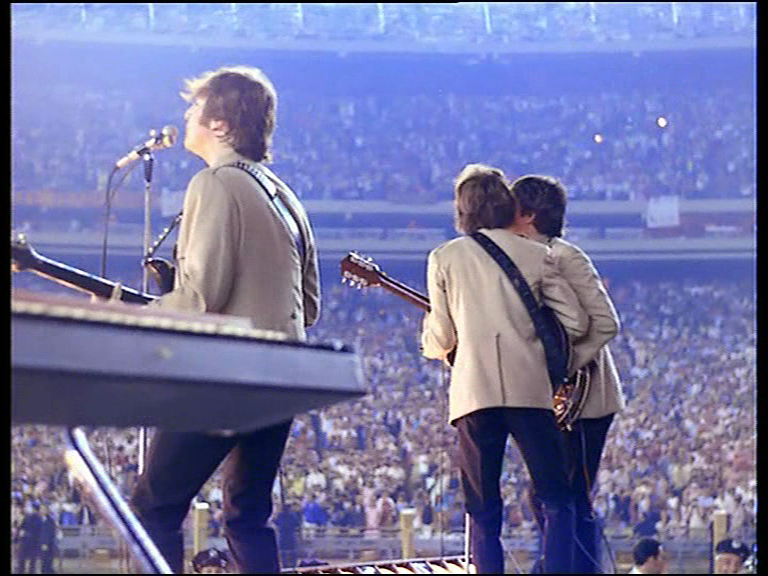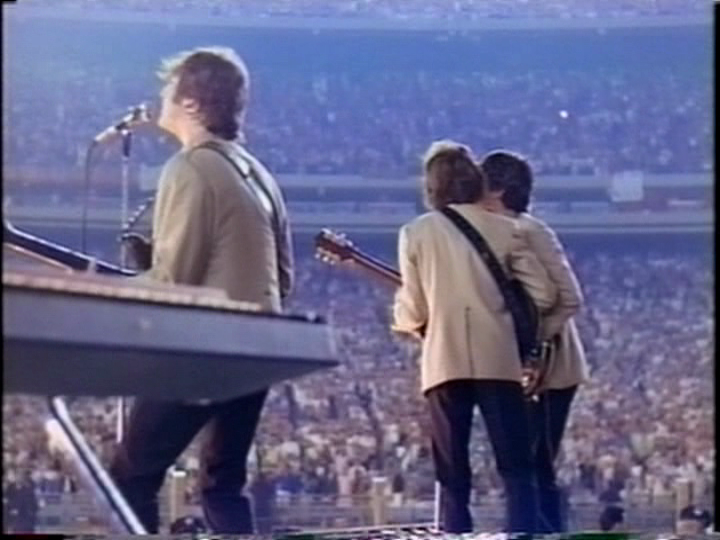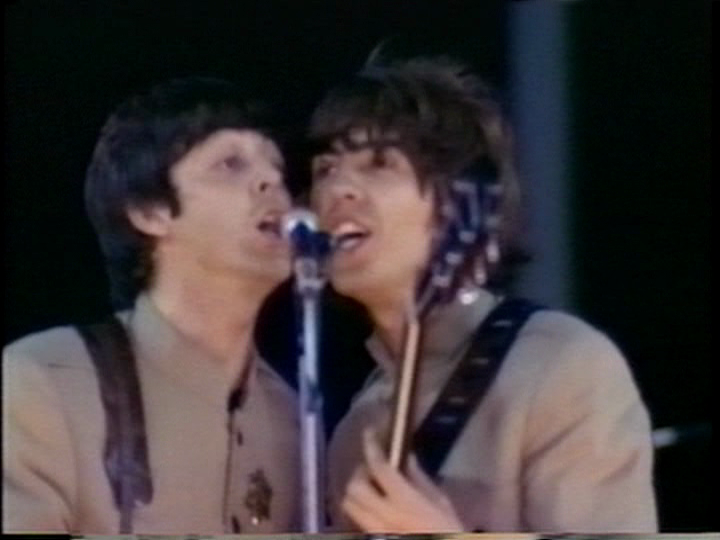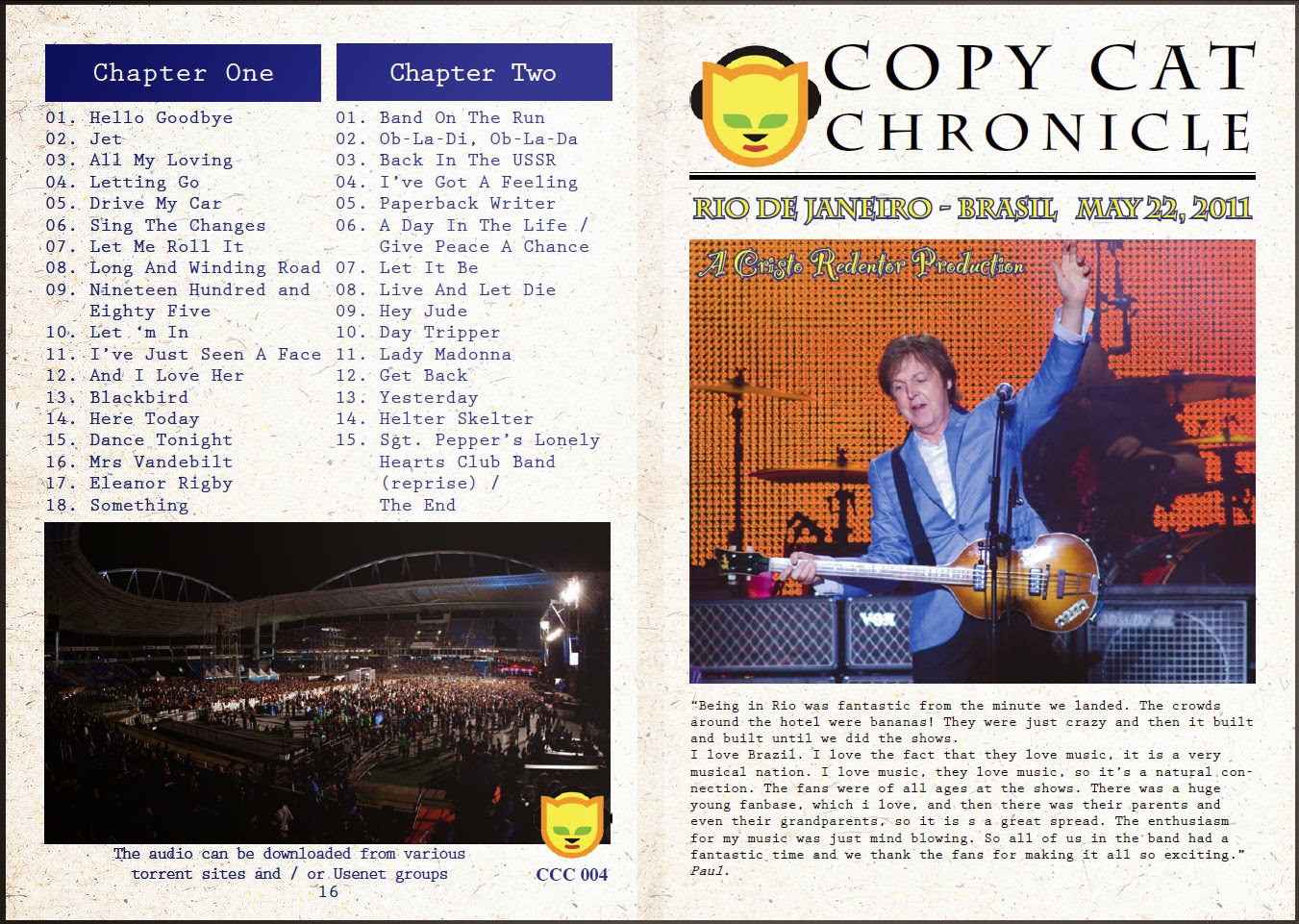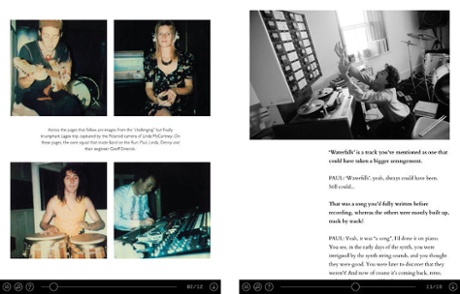![]() |
| Restored by Ron Furmanek in 1992, "Let It Be" was again shelved indefinitely. |
Beatle People: Those of you who have read Dave Morrell's entertaining
"Horse-Dogging" will have read about
Ron Furmanek as a young Beatles fan from New Jersey back in the early seventies.
Furmanek later turned his hobby into his job, specialising in researching archives for film footage to supply to documentaries, and for a while he was employed by
Apple Corps Ltd to do audio and video restoration on their own archive material.
Since 1987 he has colour corrected the visuals and remixed the audio (when applicable) on all of The Beatles promotional films, The Beatles Live At The
Washington Coliseum, The Beatles At
Shea Stadium,
Let It Be, and
Magical Mystery Tour.
Originally working with Walter Shenson, Furmanek adressed the audio problems on previous home video releases of
A Hard Day's Night and did a mono only remastered soundtrack. In previous releases, the sound effects were missing in "If I Fell", there was screaming overdubbed throughout the title song (the original did not have this) and they had "lost" some dialogue and sound effects throughout the entire film. Furmanek's remastered mono soundtrack appeared on the Miramax version of the DVD in 2000, unfortunately they had decided to remix it into fake 5.1 surround sound, thus ruining it.
![]() |
| Furmanek's 1992 "Let It Be" restoration featured both mono and multitrack sound. |
It all started in 1972, when he was involved in the short film,
"Braverman's Condensed Cream of the Beatles" which Chuck Braverman supplied all the archival footage and photos for.
|
| Braverman's Condensed Cream of the Beatles |
Furmanek then was involved with the 1976
"Rock & Roll Music"TV promo spot for Capitol Records. In 1980 he was involved in the
"Tribute to John Lennon" special, produced by Scotti Brothers/Syd Vinnedge productions, as well as involving himself in the Capitol Records Beatles release
"Rarities".
![]() |
| The "Rarities" LP from Capitol Records |
The UK version of "Rarities" was all ready to be released in the USA, and Furmanek knew that this would make little sense. Through Mike Heatley from EMI in the UK, Furmanek got in touch with the correct people at Capitol in Hollywood in 1979, and Furmanek started to collaborate with them to produce a U.S. equivalent to the "Rarities" LP.
"It took some doing, but I finally convinced them that the UK version coming out in the US made no sense, most of the songs on it were not rarities (in the USA). The tracks on the final version were all pretty much my choice, we got fresh tape dubs sent in from Abbey Road of mostly every track. The tracks I chose were all either out of print totally in the USA, never on an LP over here or never released in any form here at all," Ron explained on a Steve Hoffman forum page.
"I think it worked and flowed quite well musically. There were a few tracks that could not be located in time for the planned release date, that is why a few are in mono where there was a stereo tape available, but these did not get found and sent in time!"
"Love Me Do was in fact dubbed from a mint Canadian 45 I had, as both Capitol of Canada and the UK could not find that tape either! I came up with the idea to edit "I Am The Walrus" and "Penny Lane" to make the unique versions heard here."
"It was also my suggestion to utilize the original negative of the butcher photo which provided a much better quality image of the photo than the actual 1966 LP cover."Of course, Furmanek's involvement with the butcher cover harks back to when he and Morrell had some t-shirts printed with the infamous cover image on them.
Furmanek also talked them into using the famous rainbow label on this disc, the first time it had been used on a USA LP since 1969, except for a few one off projects.
The USA "Rarities" LP had some tracks which had not been available for years in the USA ("Misery" and "There's a Place" were last seen on 1965 Capitol Star Line singles). Of course, now that the British catalogue is dominating, the U.S. "Rarities" compilation is only interesting because of Furmanek's edits of "I Am The Walrus" with it's extra bars and "Penny Lane" with the final trumpet ending spliced in from the promo. It has not been released on CD.
In 1981, Furmanek researched and found the archival footage used in George Harrison's
"All Those Years Ago" promotional video.
With the re-release of
"Love Me Do" in 1982, he was involved in the making of the music video for that. The same year, he put together the film footage for The Beatles
"Movie Medley" promotional video, and the following year came up with the archive footage for
The Beatles 20 Greatest Hits TV spot.
|
| The 1982 Love Me Do promotional video |
For MTV, he supplied the archive material used in their Paul McCartney interview.
Like "Love Me Do",
"Please Please Me" also got it's own promotional video, put together by Furmanek, now acting as Co Director and producer for all three versions made.
|
| The 1983 Please Please Me promotional video, version 3 |
For Capitol Records, he produced their
Beatles 20th anniversary TV spot, as well as a video for
"I Want To Hold Your Hand".
In 1987, Furmanek was involved in The Beatles'
"Help!" by Criterion Collection / Voyager Company, when he produced and compiled side four of the laser disc:
"The Help! Scrapbook".
Note that I am only mentioning the Beatles projects he was involved in, he was also archive researcher for a number of other artists and groups. Furmanek is one of the pioneers of compact disc compilations and re-issues, having produced over 200 CD titles since 1988.
In 1988, he restored the film and remixed the multitrack audio for
"Magical Mystery Tour", which was released on VHS, Betamax and Laserdisc. The same year, he was involved in research of archive footage for the
"Imagine: John Lennon" feature film from Warner Bros.
When the Beatles
"First US Visit" was released in 1991 by Apple/MPI, Furmanek was credited with production coordination as well as film restoration. The same year, he was also involved in Apple Records' reissue campaign of their back catalogue on vinyl and compact disc.
He was producer of the Making Of A Hard Day's Night
"You Can't Do That" in 1994, that special is also included with the new A Hard Day's Night edition.
When the
Anthology TV series came along, Furmanek again was involved in film and video restoration and research, and that seems to have been Furmanek's last involvement with The Beatles/Apple in an official capacity.
While working for Apple, Furmanek was in charge of restoring their video and film archive, including the promotional films as well as the feature films. His remix work included remixing and doing sync up's on any song that an early stage 4 track tape existed on, (for example: "Hello Goodbye,""Penny Lane,""Rain,""Help!,") for every single promotional film, as he didn't want to use the (at the time) semi-bad released stereo mixes with vocals or main music backing track on one side of the stereo image.
This was entirely his brainstorm and decision and everyone at Abbey Road said it couldn't be done. Furmanek always mixed with the mono master on hand to compare and make it match the busting and powerful mono mix, but in powerful wide stereo. He also remixed the entire parts of
Let it Be that were recorded on 8 track. For
Shea Stadium he synced up two raw 2-track tapes to create a 4-track (as heard on the recent HMC bootleg DVD). For
Magical Mystery Tour (his version is on the 1997 MPI Laserdisc and VHS cassette, they messed it up on the 1997 DVD), he did the same for three of the songs, the title track, "Blue Jay Way" and "Your Mother Should Know".
"I was in charge of all of the film restorations and had to make special requests to remix," Furmanek recalled.
"One fun thing that I do remember, a wrong reel being put on the machine for "Your Mother Should Know", it was a completely different version than released! We all looked at each other and said,"cool!" (this version I believe eventually came out on the Anthology CD).""I had finished remixing the entire film and then went to tackle the songs The others I felt were fine enough mixes for the video, and I chose not to touch them. These three however, were a completely different story! I think that everyone at the studio thought I was a bit daft with what I was asking to do! I wanted to go back to the original "stages" takes for the songs. We had three separate 4-tracks for each song all synched together onto a 24-track tape . This way I was able to really "open" up the songs, they are very weak on the released stereo mixes.""The trick worked great, and now you have great wide separation on these three songs. "Blue Jay Way" is now the rarer MONO mix, but now in wide stereo!""George Martin was only there for the mixing part. Needless to say, we spent a very long time on these tracks,. At one point during working on the 'Blue Jay Way' backing tracks, he looked at me and laughingly said, 'this is rubbish!, did we release this?'"
"Nothing personally against the man, but after a while of trying all kinds of things, nothing at all was coming across the way that I wanted it to. He could see this, he finally got up, had me sit at the mixing board and said, 'go ahead, do it the way you like!'"
As you would expect, Furmanek is full of praise about the 1999
"Yellow Submarine Songtrack" album, which did it his way: away with the old sixties stereo mixes and remix the songs for a modern stereo picture from the multitracks.
"I feel that if the entire Beatles catalog was to be redone this way it would be more than brilliant!"
For the 2014
CNN presents The Sixties – "The British Invasion", Furmanek again handled the archival footage and research.
Sources:
Wikipedia and
Steve Hoffman's Music Corner forum.

